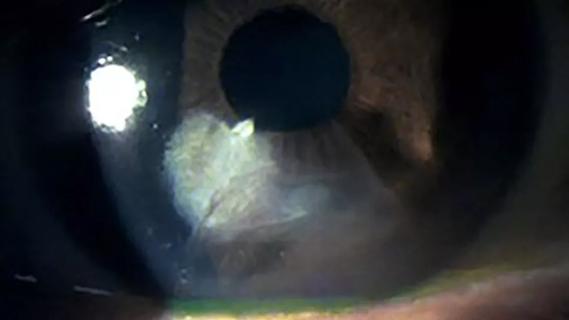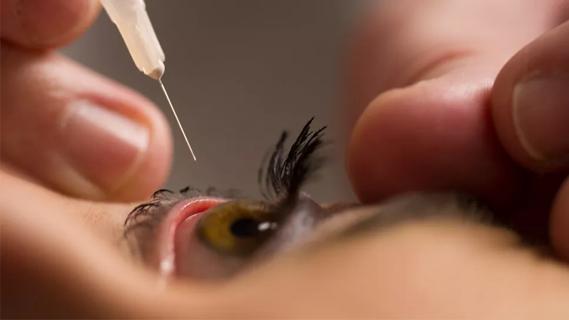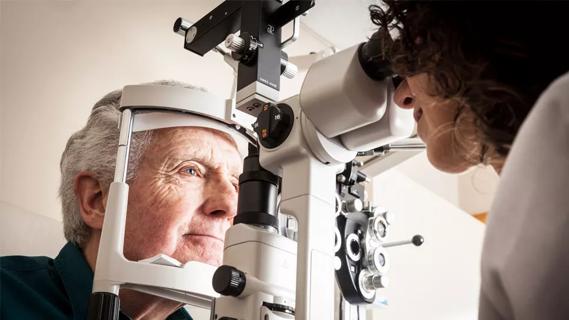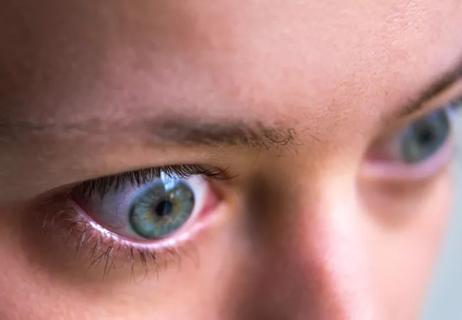Advertisement
Faster, lower-risk procedure also can lower IOP

Ophthalmologists are successfully treating narrow angle glaucoma with cataract surgery and finding it offers some advantages for patients. “Although it isn’t for everybody,” says Jonathan Eisengart, MD, “it can be much faster, with much lower risk and a quicker recovery than traditional glaucoma surgery.”
Advertisement
Cleveland Clinic is a non-profit academic medical center. Advertising on our site helps support our mission. We do not endorse non-Cleveland Clinic products or services. Policy
Case 1: A 73-year-old woman presented with chronic angle-closure glaucoma and laser iridotomies in both eyes. Her left eye pressure was 21-25 on dorzolamide-timolol fixed combination and latanoprost. Her visual field demonstrated a superior arcuate and inferior nasal step defect. She had a 2+ nuclear sclerotic cataract, a shallowed anterior chamber and vision of 20/25. Her eye pressure was too high, given that she had a visual field defect in both hemifields of her left eye.
Case 2: A 57-year-old patient with a history of hyperopia (+1.75 OU) was referred for acute angle-closure glaucoma. The referring ophthalmologist had performed a laser iridotomy and administered maximum medications. Nonetheless, the intraocular pressure remained at 47 and the patient remained in acute angle closure. The patient could only see hand motion, and the cornea had marked microcystic edema and a shallow anterior chamber. The laser iridotomy was patent, the iris was fixed at mid-dilation and the patient was writhing in pain.
Case 1: Rather than add a fourth medication, Dr. Eisengart proceeded with cataract extraction and intraocular lens implantation.
Case 2: Dr. Eisengart performed an emergency cataract extraction with goniosynechiolysis.
Case 1: After surgery, the patient’s intraocular pressure was 19 on the dorzolamide-timolol fixed combination alone, and her angles were wide open on gonioscopy.
Case 2: At 5 weeks postoperative, the patient’s vision refracted to 20/20 with a +2.25 hyperopic correction. Intraocular pressure was 16 on no medications, and there was some ischemic atrophy of the iris sphincter.
When eye pressure’s too high, and a patient has visual-field defects, the typical approach is to add a medication and, if that fails to lower the pressure, perform glaucoma surgery. “Traditional glaucoma surgery is pretty high risk,” says Dr. Eisengart. However, cataract surgery, particularly in eyes with narrow-angle forms of glaucoma, can open the angle and lower the pressure.
The narrowing of the angle leads to damage of the drainage structures. “By opening it,” he says, “you can prevent progressive damage to the drainage structures and a progressive rise in eye pressure as the years go by.”
Advertisement
In the first case, the patient had mildly-moderately elevated intraocular pressure and a relatively mild cataract. In the second, the patient had persistent acute angle-closure glaucoma despite a patent iridotomy. For some people with narrow-angle or angle-closure glaucoma that are not well-controlled on medication, cataract surgery is an option safer than traditional glaucoma procedures. “If the glaucoma surgeon performs cataract surgery and it doesn’t lower the intraocular pressure adequately, he or she can still go ahead and perform the glaucoma surgery,” he says.
Dr. Eisengart notes that cataract surgery can be useful in both open- and closed-angle glaucoma, but especially narrow- or closed-angle glaucoma. “Although cataract surgery is most often used to improve vision, we’re learning that it’s an option that should be included in the armamentarium of tools we use to lower intraocular pressure,” he says.
Find more Glaucoma related articles here.
Advertisement
Advertisement

Skin conditions could indicate risk of complication after surgery for retinal detachment

New study counters earlier findings linking drugs with eye disease

Review shows that the disease isn’t only in young women with obesity

Only 33% of patients have long-term improvement after treatment

Studies continue to indicate effectiveness and safety

Study highlights the value of quantitative ultra-widefield angiography

Switching medications may decrease treatment burden and macular fluid

Interventions abound for active and stable phases of TED